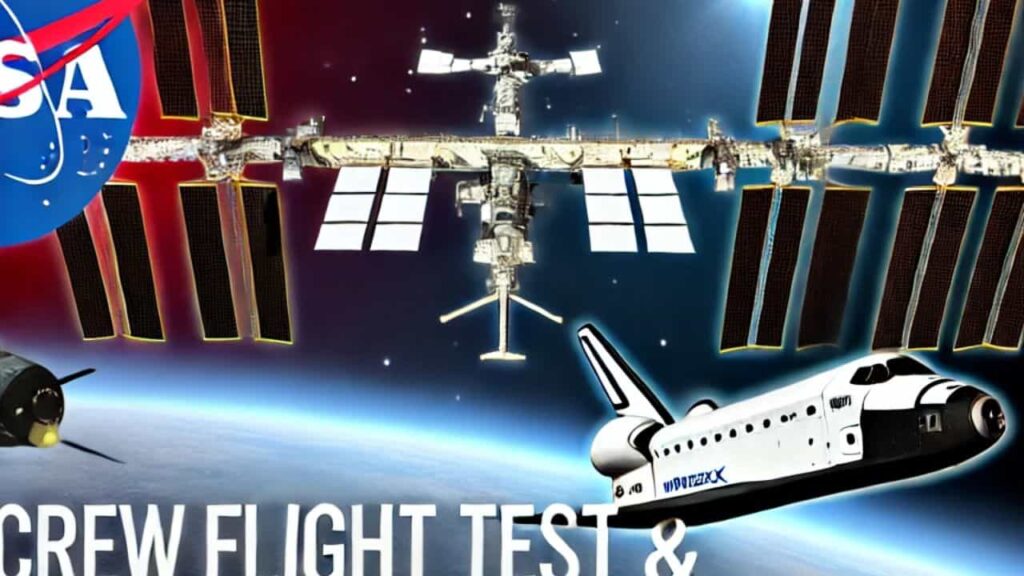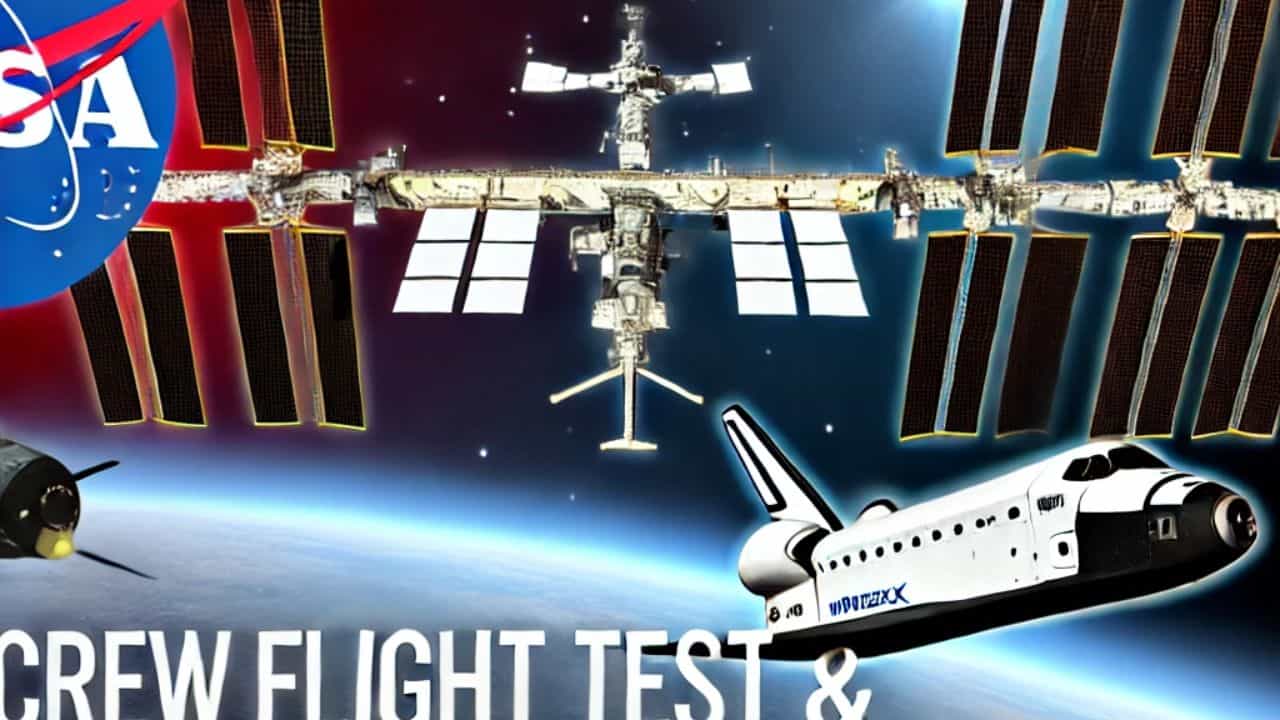NASA, International Space Station, ISS, Boeing Crew Flight Test, SpaceX Crew-9 Mission, Space Operations, Commercial Crew Program, Artemis Campaign, Human Spaceflight, Mars Exploration, Space News
NASA will host a teleconference on August 7 to discuss ongoing ISS operations, including the Boeing Crew Flight Test and SpaceX Crew-9 mission. Learn about the latest advancements in space exploration, the role of the ISS, and NASA’s future plans for lunar and Mars missions.

NASA to Provide Crew Flight Test and Space Station Missions Update
NASA is set to host a media teleconference at 12:30 p.m. EDT on Wednesday, August 7, to provide updates on the ongoing operations of the International Space Station (ISS), including details on the Boeing Crew Flight Test and the upcoming SpaceX Crew-9 mission. The audio of this briefing will be available for live streaming on NASA’s official website, allowing the public and media to tune in.
Key Participants
The teleconference will feature notable figures from NASA:
- Ken Bowersox, Associate Administrator of the Space Operations Mission Directorate
- Steve Stich, Manager of the Commercial Crew Program
- Dana Weigel, Manager of the International Space Station Program
These experts will provide insights and updates on the current and future missions involving the ISS, highlighting the significance of these operations in advancing human space exploration.
Media Participation
For members of the media interested in participating and asking questions during the teleconference, it is mandatory to RSVP no later than two hours before the start of the call. They need to contact Jimi Russell at james.j.russell@nasa.gov. Detailed information regarding NASA’s media accreditation policy is available online for reference.
The International Space Station: A Hub of Continuous Innovation
For over two decades, the ISS has been a hub of continuous human presence and scientific innovation in space. It has played a pivotal role in advancing our scientific knowledge, demonstrating new technologies, and facilitating research breakthroughs that are not possible on Earth. The ISS serves as a critical testbed for NASA to understand and overcome the challenges associated with long-duration spaceflight, thereby paving the way for future human exploration beyond low Earth orbit.
Scientific Achievements and Technological Advancements
The ISS has enabled numerous scientific achievements and technological advancements. Research conducted on the ISS spans various disciplines, including biology, physics, astronomy, and materials science. Experiments conducted in microgravity conditions aboard the ISS have led to significant discoveries and innovations that benefit life on Earth and enhance our understanding of space.
Commercial Opportunities and the Low Earth Orbit Economy
As commercial companies increasingly focus on providing human space transportation services and developing space destinations, the ISS plays a crucial role in fostering a robust low Earth orbit economy. NASA’s collaboration with private companies aims to expand commercial opportunities and create a sustainable space economy that benefits humanity.
Boeing Crew Flight Test and SpaceX Crew-9 Mission
The upcoming teleconference will provide detailed updates on two significant missions: the Boeing Crew Flight Test and NASA’s SpaceX Crew-9 mission.
Boeing Crew Flight Test
The Boeing Crew Flight Test marks a significant milestone in NASA’s Commercial Crew Program. This mission is a crucial step towards certifying Boeing’s CST-100 Starliner spacecraft for regular crewed missions to the ISS. The flight test will demonstrate the spacecraft’s capabilities, ensuring it meets all safety and performance requirements for human spaceflight.
NASA’s SpaceX Crew-9 Mission
NASA’s SpaceX Crew-9 mission is another vital component of the agency’s efforts to maintain continuous human presence on the ISS. This mission will transport astronauts to the ISS, where they will conduct various scientific experiments and perform essential maintenance tasks. The Crew-9 mission exemplifies the successful partnership between NASA and SpaceX, showcasing the reliability and efficiency of commercial space transportation.
NASA’s Artemis Campaign: Preparing for Mars
While the ISS continues to be a cornerstone of human space exploration in low Earth orbit, NASA’s Artemis campaign is extending the boundaries of human presence to the Moon and, eventually, Mars. The Artemis missions aim to return humans to the lunar surface, establish a sustainable presence, and prepare for future crewed missions to Mars.
Artemis I and Beyond
The Artemis I mission, an uncrewed flight test, will be the first integrated test of NASA’s Space Launch System (SLS) rocket and the Orion spacecraft. This mission will pave the way for subsequent Artemis missions, including crewed lunar landings. The knowledge and experience gained from Artemis missions will be crucial in addressing the challenges of long-duration spaceflight and deep space exploration.
Human Exploration of Mars
NASA’s long-term goal is to send astronauts to Mars, and the Artemis campaign is a critical stepping stone towards achieving this objective. The Moon serves as a proving ground for new technologies and operational concepts that will be essential for the journey to Mars. By establishing a sustainable presence on the Moon, NASA aims to develop the infrastructure and expertise needed for human exploration of the Red Planet.
The Future of Space Exploration
NASA’s efforts in low Earth orbit, the Moon, and eventually Mars are interconnected, forming a comprehensive strategy for the future of space exploration. The ISS continues to be a vital platform for scientific research and technology development, supporting both commercial and government missions. Simultaneously, the Artemis campaign is advancing human exploration beyond low Earth orbit, setting the stage for humanity’s next giant leap.
Collaboration with Commercial Partners
The collaboration between NASA and commercial partners is a cornerstone of the agency’s space exploration strategy. By leveraging the capabilities and innovations of private companies, NASA is expanding access to space and fostering a competitive space economy. This partnership approach enhances the sustainability and affordability of space missions, ensuring continued progress in human space exploration.
Inspiring the Next Generation
NASA’s missions and achievements inspire people around the world, fostering interest in science, technology, engineering, and mathematics (STEM). The agency’s commitment to exploration and discovery encourages the next generation of scientists, engineers, and explorers to pursue careers in space-related fields. By engaging with the public and sharing the excitement of space exploration, NASA aims to cultivate a diverse and talented workforce that will drive future missions.
Conclusion
The upcoming media teleconference hosted by NASA will provide valuable insights into the ongoing operations of the International Space Station, the Boeing Crew Flight Test, and the SpaceX Crew-9 mission. These missions represent significant milestones in NASA’s efforts to advance human space exploration and expand commercial opportunities in low Earth orbit. As NASA prepares for future missions to the Moon and Mars, the agency’s commitment to innovation, collaboration, and scientific discovery continues to inspire and drive progress in space exploration. By leveraging the expertise of commercial partners and fostering a sustainable space economy, NASA is paving the way for humanity’s next frontier in space.
Read More
- Chat GPT will destroy blogging in 2023
- NASAs DART Mission Unveils New Insights on Binary Asteroid System Didymos and Dimorphos
- NASA Missy Elliott: Hip-Hop Song Beamed to Venus
- Why NASA Scientists Believe We Might Not Detect Solar Panel Technosignatures from Alien Civilizations










